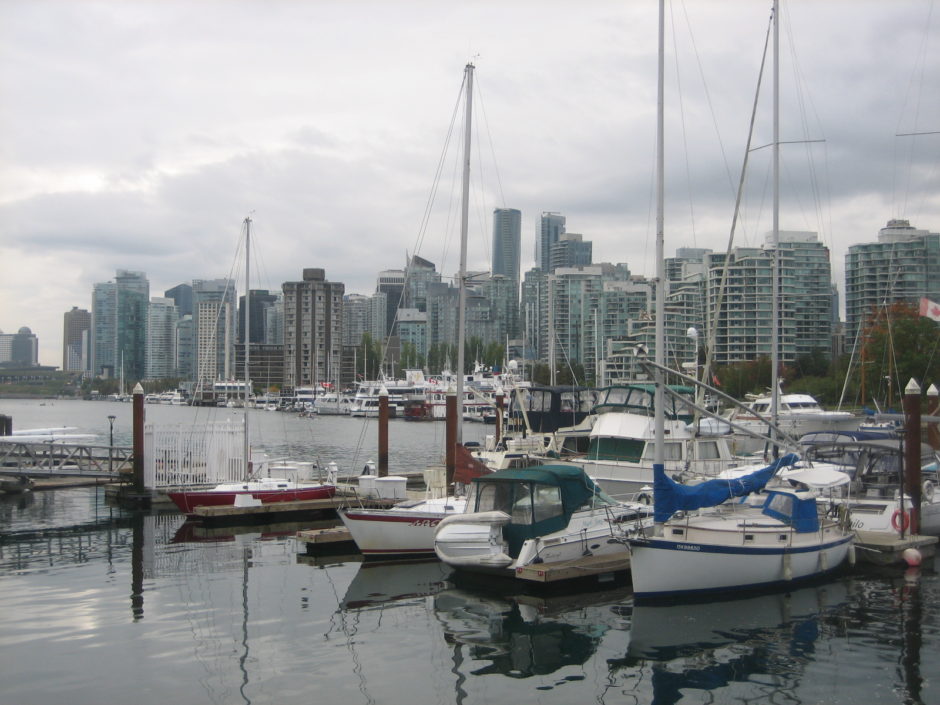I was fortunate enough to visit Vancouver earlier this month, but there was a problem: I had less than 24 hours to explore this gorgeous city on Canada’s west coast. Unlike my friends who’d recently bought a lovely little condo through Eddie Yan, my time was very limited.
What could I possibly see in so short a time when I had other commitments and the weather forecast predicted rain?
It didn’t take me long to decide.
I would reacquaint myself with Vancouver’s most favorite tourist destination, Stanley Park, which attracts about eight million visitors annually.

Four hundred hectares in size and still as densely-forested as it was when it opened more than a century ago, it’s 158 hectares larger than New York City’s Central Park.
I visited Stanley Park for the first time 10 years ago and was tremendously impressed by its manicured and raw beauty. I vowed to return, and when the opportunity presented itself, I didn’t hesitate.
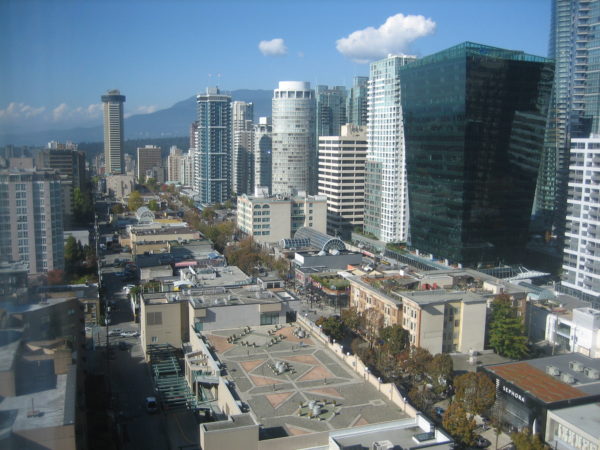
As expected, the skies were grey when I set out for the park on a cool Saturday morning from my hotel. Armed with a borrowed umbrella, I started walking northward on Robson Street, a usually busy thoroughfare filled with shops, restaurants and cafes. I could have taken the bus, but I preferred to walk. I wanted to soak in the funky atmosphere
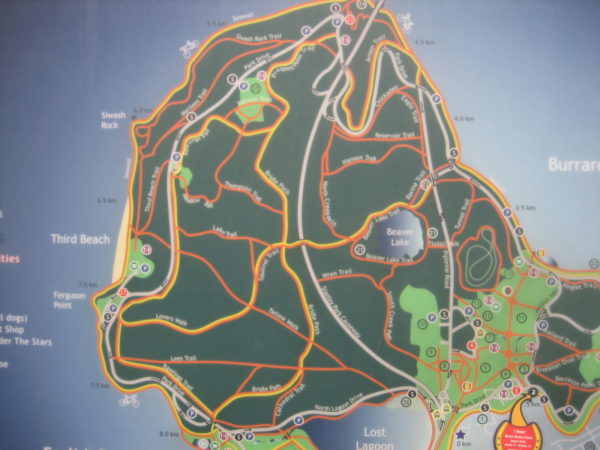
As I got closer to the park, I passed sedate condo buildings with well-tended gardens. Within minutes, I found myself in the park. Turning right, I walked past the Royal Vancouver Yacht Club, toward the nine-kilometer-long seawall, the park’s single most popular attraction.
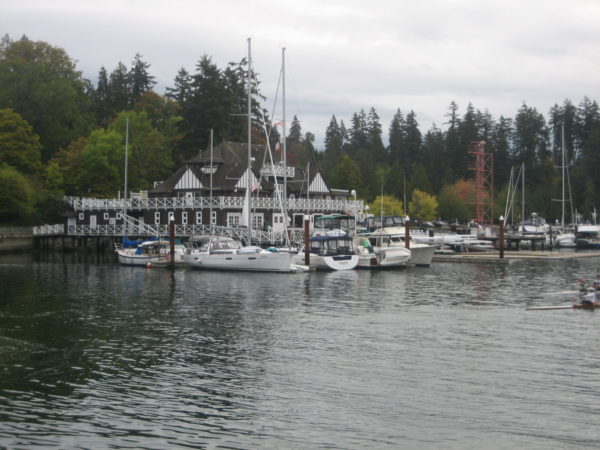
Pausing for a few moments, I scanned the picturesque Coal Harbor marina and the cluster of condos just beyond. Before resuming my walk, I watched a seaplane coming in for a graceful landing and cyclists whizzing by.
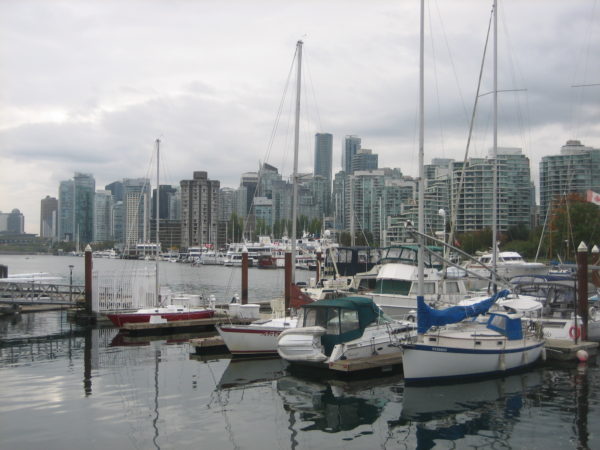
Since time was of essence, I thought it would be best to take a horse-drawn carriage tour. If it had been sunny, I probably would have rented a bicycle, my favorite mode of transportation.
After the passengers had settled in, the two white draught horses began pulling the covered wagon with a monotonous clop-clop sound. The driver, a young woman, give us a canned running commentary about the park.
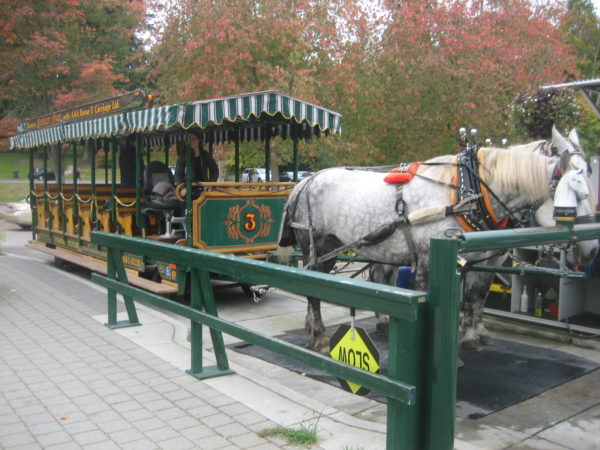
Colonized by Britain in 1858, and named after Lord Stanley, the governor-general of British Columbia, the land on which the park is situated was originally inhabited by native tribes. It was then repurposed as a military base to fend off the possibility of an American invasion of Canada.
Vancouver’s second mayor, David Oppenheimer, a Jewish immigrant from Bavaria who arrived here in the 1850s, officially inaugurated the park on September 27, 1888. Today, Oppenheimer’s monument stands serenely in a plaza.
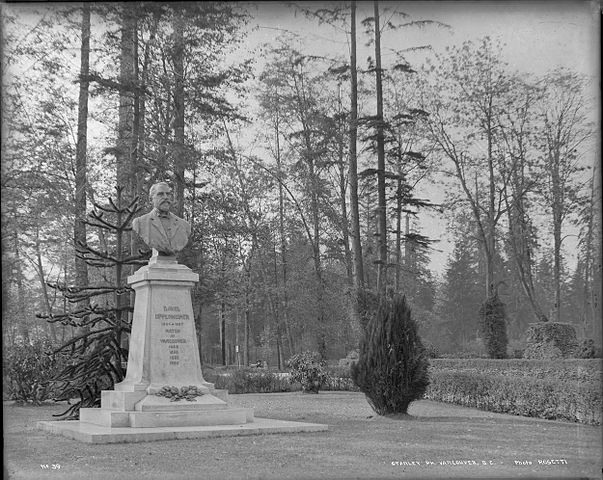
By one estimate, there are nearly 500,000 trees within the park’s boundaries, mainly red cedar, Douglas fir and hemlock. Some of them are as tall as 76 meters and hundreds of years old.
Several of the trails on the remote western side of the park, such as Lovers Walk and Bridle Path, are old skid roads from which lumberjacks hauled lumber out of the park. These trails inspire a profound sense of solitude. Squirrels, coyotes, skunks and raccoons, among other animals, roam the woods.
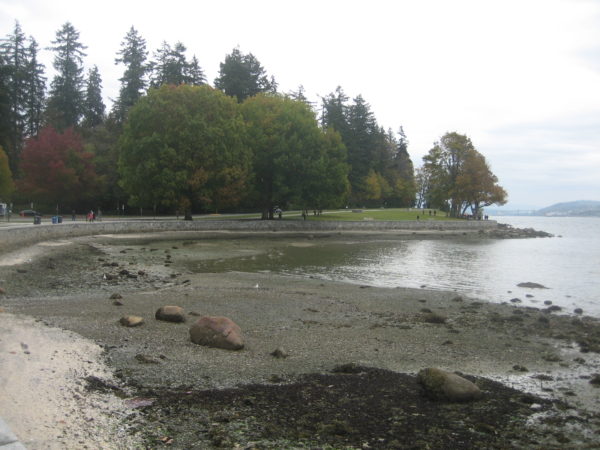
Construction of the seawall began in 1917, but 62 years would elapse before it was finally finished. Used by strollers and cyclists alike, the seawall is supposed to guard against erosion, but wild wind storms have periodically damaged it and downed trees.
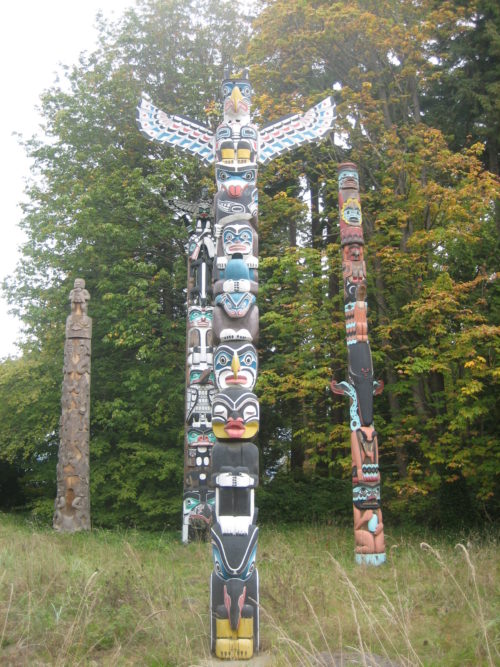
As the tour continued, we passed Discovery Island — a Canadian naval base and former Indian burial ground — and stopped at the First Nations display of totem poles. Carved from red cedar and painted in a variety of bright colors, they tell of real and mythical events.
A graceful statue of the great Canadian athlete, Harry Jerome, the world record holder of the 100 yards and 100 meters sprint in 1960, stands nearby.
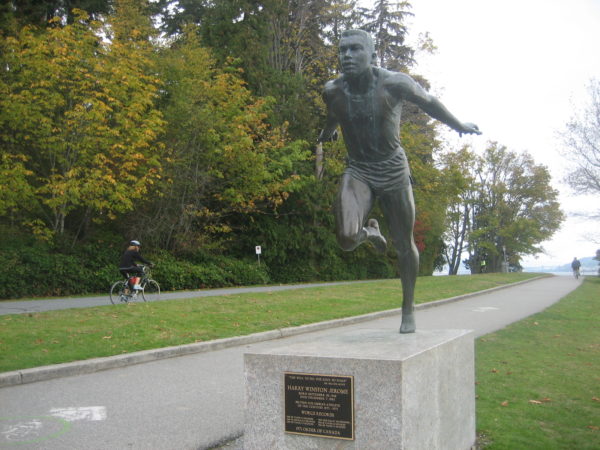
With the Lions Gate Bridge and the coastal mountain range coming into view, the guide told us that residential homes around here, averaging $5 million, are the most expensive in Canada.
North Vancouver, home to Canada’s largest port, beckoned. The port is accessed via Burrard Inlet, which is inhabited by seals, sea lions, salmon and humpback whales.
Toward the close of the tour, we passed the rose garden, where 50 varieties of roses bloom for four months of the year. After disembarking, I spent another hour exploring more of the seawall, which offers clear views of Vancouver’s skyline.
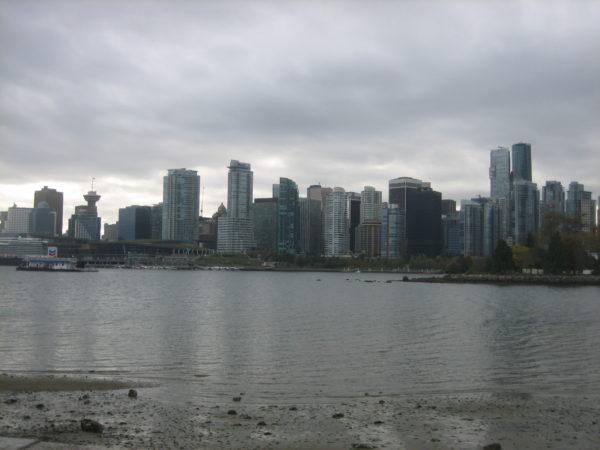
Regrettably, I was pressed for time and could not tour the aquarium. Nor could I visit the park’s two beaches or its meadows. But I had no reason to complain. Stanley Park had already given me a lot of itself.
